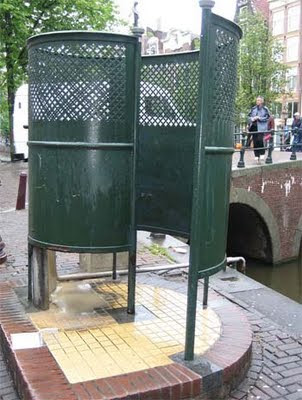Like many, I was first shocked and then saddened by the news that
Design Week (or at least the good old paper version) ceased publishing last week. I’d literally just stepped off the plane from a wicked weekend in Amsterdam, switched my mobile back on, and there was a message from editor
Lynda Relph Knight saying she wouldn’t be needing my column this month. Or evermore, for that matter.
 |
| Volume 26/Number 26 – the final issue of DW |
Deborah remarked that I looked as though someone had died when I picked up the message. Wan and somewhat perturbed. And in a way, that’s the case. There’s no argument that the magazine had been an integral part of the UK design landscape for the past quarter of a century. The only weekly design publication in the world, it had seen off plenty more pretentious pretenders, including my own monthly ‘alma maga’,
Direction.
My first thoughts, of course, are with Lynda, who has tirelessly steered the good ship DW for over 20 years, and been instrumental in creating a lively, coherent design community in this country. She’s also been a great friend and supporter of mine, ever since I met her at an IBM press junket in Berlin ten years ago, when I was writing about design for the Daily Telegraph.
And for the past eight years, Design Week had become a regular part of my life too, as I scratched my head to come up with a suitably catchy or contentious
Private View column each month. I was just two shy of my 100th effort, which would have been a satisfying personal milestone — but overall, I just feel lucky to have had such a good run.
 |
| My 98th and – though I didn’t realise it at the time – last column (online version) |
I’d always tried to keep my Private Views slightly tongue in cheek, to poke some affectionate fun at the penchants and peccadillos of designers, to use my daily contact with the species to feed various gently amusing insights and observations. Over the years, I’d publicly chewed over traffic and toilet design, colour and crowdsourcing, mergers and modernism. I hope I raised a smile and occasionally touched on some home truths.
The PV subjects that really raised the temperature of the letters’ page, however, were the ones on free pitching, the lack of women in design, and perhaps less obviously, my rant against e-Christmas cards two years ago, which prompted one outraged reader to denounce my “archaic way of thinking”.
Perhaps he was right. Digital Christmas cards, digital magazines… maybe those Scandinavian pine forests have a right to rest easy. But of course Centaur’s decision to close Design Week doesn’t have a lot to do with embracing new media or a green agenda. It’s all about the commercial imperative.
The magazine was becoming more emaciated by the week. Without feature advertising, there were fewer features. And those that did appear were crammed on to a page or a spread at best. Even within the framework of
Sam Freeman’s excellent redesign, it was impossible to give the work the space it deserved, especially compared to the lush ten-pagers in
Eye magazine. So the balance tipped far more towards news, opinion and comment. Which, you could argue, is more suited to the immediacy of an online publication. That’s certainly the line Centaur are taking.
Almost by second nature, this blog post is running to 580 words, the length of a Private View column. I’ve decided to keep writing them. If anyone wants to publish them, great. If not, they’ll be appearing here, on the third Thursday of each month as usual.
I’ll miss you Design Week.









